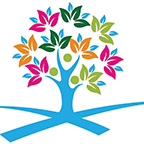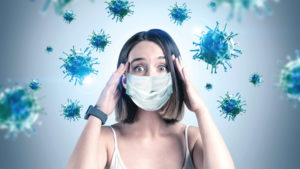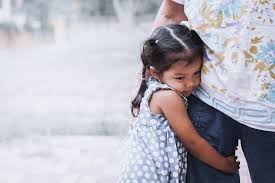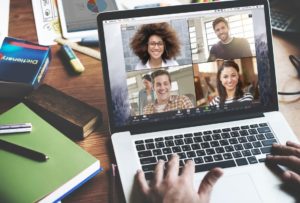
The COVID-19 pandemic has caused a rise in numerous physical and mental health disorders globally. However, one of them in particular is trending upwards and can be seen in all populations and all age ranges. The common disorder in mention is none other than social anxiety. The reason there has been an increase in social anxiety cases is in part because of social isolation due to COVID-19. According to the National Institute of Mental Health (2020), every year the amount of people in the United States suffering from social anxiety increases. This year, the number of people that report having social anxiety increased from 7.1% to 12.1%.
What does social anxiety look like?
- A fear of being judged or criticized by others
- Feeling self-conscious or fearful in social settings
- A fear of meeting new or interacting with a new group of people
- A fear of speaking in class for being judged by peers
- A fear of not following new “COVID-19” rules properly (e.g., following the taped arrows in shopping markets correctly)
What does the research tell us?
In a study by Ikeda (2020), people with higher levels of social anxiety tend to have an increased awareness of the micro expressions of other people. While there are many reasons for this hyperawareness, if someone already struggling with social anxiety has a marked decrease in socializing, it can be understood that when they are in social settings, they will be even more anxious than previous years. Now, when people with social anxiety are immersed in rare social settings, this causes a hyperawareness in microfacial expressions but a diminished ability to properly interpret those facial expressions. Neutral facial expressions are more often seen as angry or displeased by persons with social anxiety than they are by their non-anxious counterparts. Additionally, with many work settings becoming remote, people are practicing their social skills less while also interpreting people’s reactions more harshly. In turn, people will fear being judged, criticized, or embarrassed when in public and make more effort to avoid social settings.
In an another study by Michikyan (2020), adolescents and young adults with social anxiety tend to self-present themselves online through social media as their ideal and less realistic self. Being that people with social anxiety tend to socialize online more than in person, these people are also more subject to online bullying or criticism. Due to the pandemic and people having a stronger presence online, adolescents and adults with social anxiety are practicing their social skills less and self-presenting their false selves through their social media presence more. Moreover, people with social anxiety are more likely to compare themselves to others’ social media platforms and this will in turn increase their own self-critical behaviors.
Is there a way to treat social anxiety?
In order to decrease social anxiety, seeking support for talk therapy can be majorly beneficial. Working with a counselor can help people to understand themselves and others while also increasing their time spent outside the home and socializing. Cognitive Behavioral Therapy (CBT), exposure therapy, play therapy, art therapy, and mindfulness are some forms of treatment utilized in reducing social anxiety.
What can I do from home?
- Practice making trips outside of home
- Reduce exposure to social media
- Meditation
- Yoga
- Practice socially distanced socializing (Zoom, Facetime, Houseparty)

- Practice being in the moment (5 things you can see, 4 things you can touch, 3 things you can hear, 2 things you can smell, and one thing you can taste)
- Deep breathing from the diaphragm (don’t lift those shoulders upon inhaling)
Written by: Amanda Meffert, a graduate student obtaining her Masters in Clinical Mental Health from Northwestern University.. She provides services to children, adolescents, adults, and seniors to address a broad range of concerns, including adjustment difficulties, anxiety, depression and relationship challenges.




